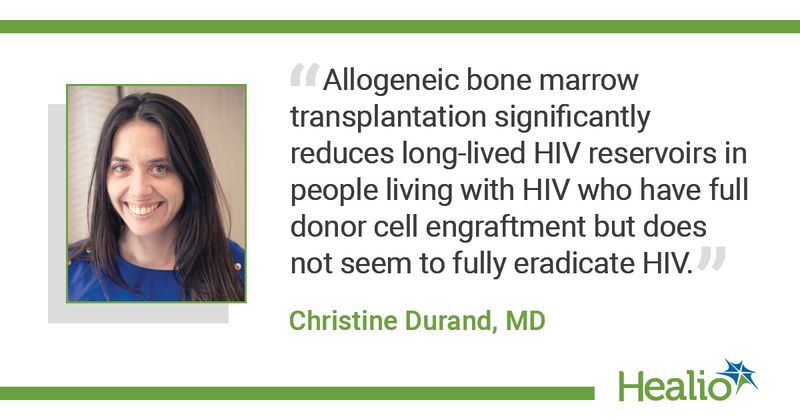Post-transplant cyclophosphamide expands donor options for alloBMT in patients with HIV
Click Here to Manage Email Alerts
The use of post-transplant cyclophosphamide as graft-vs.-host prophylaxis can expand the donor pool to allow for haploidentical or mismatched donors for allogenic blood or marrow transplantation in patients with HIV, study findings showed.
Christine Durand, MD, associate professor of medicine and oncology at Johns Hopkins School of Medicine, and colleagues conducted a first-of-its kind study assessing post-transplant cyclophosphamide among nine patients referred to the Johns Hopkins Sidney Kimmel Comprehensive Cancer Center in Baltimore for allogeneic bone marrow transplantation (alloBMT).

During the study, the researchers optimized ART by “avoiding pharmacoenhancers and adding subcutaneous enfuvirtide during post-transplant cyclophosphamide and during oral medication intolerance.”
“People living with HIV can develop hematologic malignancies that require an allogeneic hematopoietic stem cell transplantation for optimal treatment, and finding a suitable donor can be challenging, particularly for nonwhite individuals,” Durand told Healio.
“Interruption of ART in people living with HIV after allogeneic hematopoietic stem cell transplantation can lead to life-threatening acute retroviral syndrome,” she said. “Changes in ART during the course of allogeneic hematopoietic stem cell transplantation are common but can be managed with a multidisciplinary team.”
Durand and colleagues included patients living with HIV aged 18 years or older and excluded any patients with a history of resistance to enfuvirtide. They set the primary outcome as the proportion of participants who maintained ART through day 60 of the trial following alloBMT. They used a viral outgrowth assay to determine the patients’ HIV latent reservoir.
Of the nine patients, two had a relapsed malignancy before the initiation of donor searches. The remaining seven patients had successfully identified donors and proceeded to allBMT — two were matched to a sibling, two were matched to an unrelated donor, two were matched to a haploidentical donor and one was matched to a single-antigen mismatched donor, Durand and colleagues explained.
All of the patients continued ART through day 60 and needed ART changes within the first 90 days. A single patient ceased ART and developed HIV rebound with meningoencephalitis.
Of the six patients who had alloBMT and had available longitudinal measurements, four had a nondetectable HIV latent reservoir following the procedure with 95% donor chimerism. The remaining two patients showed a stable HIV latent reservoir.
“Allogeneic bone marrow transplantation significantly reduces long-lived HIV reservoirs in people living with HIV who have full donor cell engraftment but does not seem to fully eradicate HIV,” Durand said.
She noted that one of the study’s major limitations was its relatively small size.
“A larger cohort of alloBMT recipients with HIV is needed to confirm these measured effects,” Durand and colleagues wrote. “Additionally, transplant-related toxicities preclude the application of this approach to patients who would not otherwise benefit from a transplant.”
